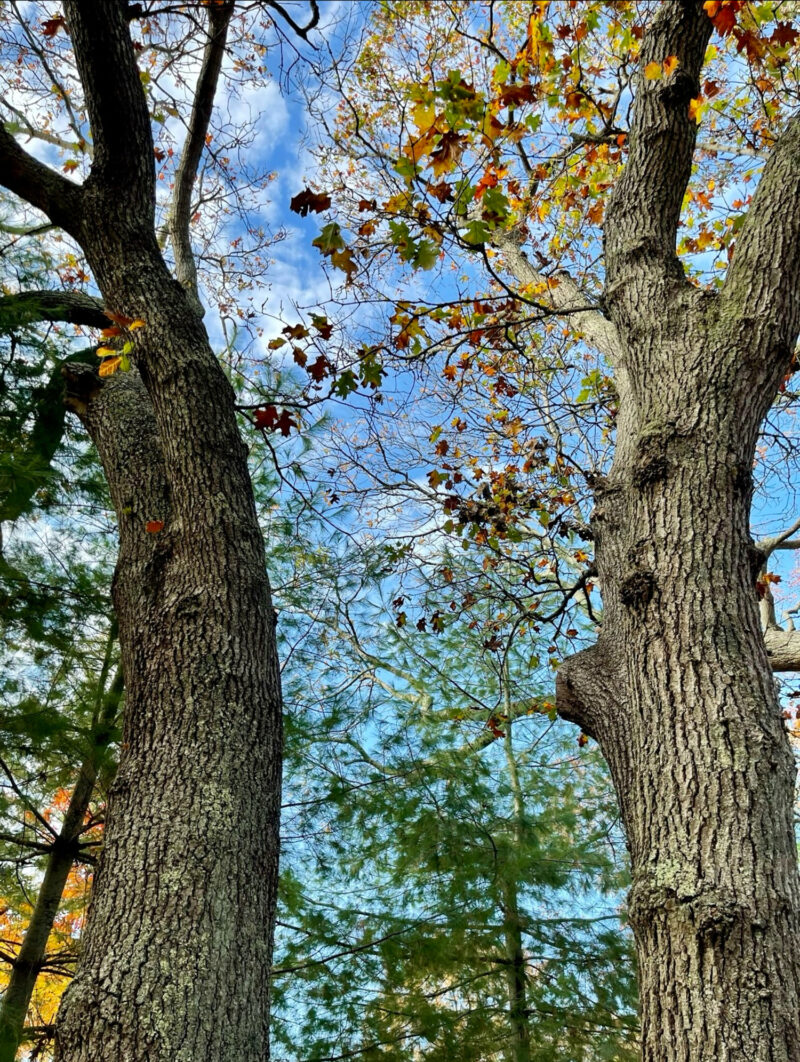
“The best time to plant a tree was 20 years ago. The next best time is now.”
It’s New York State Native Plant month, a time to reflect on the superhero of the plant world, trees. While all plants have value, trees are perhaps the most admired because of their size, beauty and stature, and the essential role they play in our daily lives.
Trees are the masters of photosynthesis, which uses sunlight and carbon dioxide to create oxygen and energy, because they greatly expand the surface area of the earth. A front yard planted with grass can perform only a small fraction of the photosynthesis that can be achieved by a mature oak tree. A single large tree can provide enough oxygen for four people.
Trees provide habitats for over 80 percent of the world’s biodiversity, from tiny insects to birds and the largest mammals. They also provide shade, which keeps our planet cool; sitting under the canopy of a large shade tree, you can enjoy temperatures up to 25 degrees cooler than standing in the midday glare. Psychological studies have further found that a landscape with trees helps to reduce depression and stress.
Trees also play a vital role in combating climate change. A mature tree will absorb more than 48 pounds of carbon dioxide in a year from the atmosphere, which means it can offset, more or less, 25 trips to the grocery store, since most gas-powered cars produce a pound of carbon dioxide for every mile driven.
So it’s disheartening to know that Long Island’s tree canopy is under attack from various sources, including diseases and insect pests (such as the southern pine beetle), as well as invasive plant species that proliferate and crowd out native species.
Developers who clear-cut properties without regard to the consequences are another major threat. It adversely impacts not only the property being clear cut, but all the adjacent parcels as well, causing flooding, erosion, and loss of habitat for insects and animals.
On a positive note there is good news. On January 9 of this year, Governor Kathy Hochul proposed $47 million for planting 25 million trees by 2033, which will help New York State meet its goal of planting and maintaining 1.7 million acres of new forest by 2040.
And on the local level, there is also growing recognition of the need to protect and preserve our trees. The Sag Harbor Village Board recently added a new chapter to its code that is aimed at protecting trees from indiscriminate clearing. The law requires that property owners get approval from a building inspector before cutting down any tree with a breast height diameter of 12 inches or larger. This law could be adopted by Southampton Town, and all our communities would benefit.
Each of us must do what we can do to support the trees in our environment. Don’t assume a tree close to your house is a problem, even an older tree. An arborist can identify and carefully prune branches that may cause trouble in the future and can help you find a less drastic solution than cutting the tree to a bare stump. Why not celebrate this season by planting a tree or two somewhere on your property. The trees native to our area are the best choices to sustain the natural wildlife and insects that live in and feed upon them. Natives also typically require less maintenance such as special fertilizers, pesticides, and water, which saves time and resources.
Some of the top Long Island native trees are white oak (Quercas alba), red oak (Queercas rubra), redbud (Cercis canadensis), silver maple (Acer saccharinum), American holly (Ilex opaca), and tupelo (Nyssa sylvatica). They can be found at nurseries and garden centers that carry native plants. Or grow your own from seed.
Trees can be purchased in pots, ball and burlap, or bare-root. Smaller trees are easier to plant and establish themselves more quickly. Choose a location for the tree based on its needs, then add a thick mulch of composted leaves to its base. This will help bring back the microorganisms in the soil and hold moisture. Water the tree from the base all the way to the drip line, which is where the farthest out leaves drip water after a rain. Tree roots extending underground need water as much as those near the trunk. Protect the base of your tree from weed whackers, which can damage them.
Each of us can help protect our environment!
Marissa Bridge is a member of the Westhampton Garden Club’s Conservation Committee.